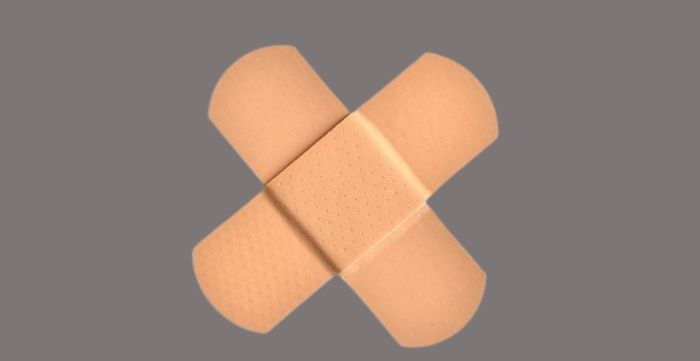
Muscle strength must increase by exposing the muscle to more stress than it is accustomed to, which is a burn in the muscle during exercise. This slight burn is what we refer to as good pain, and it is the basis for the adage “no pain, no gain.” This pain should be brief and disappear as soon as the exercise completes.
Fatigue following a good, intense workout indicates that the activity is pushing the athlete’s body to its limits, but it should not be overdone. This exhaustion should leave the person feeling energized but not fatigued.
Fatigue that lasts days indicates that the individual’s physiology has been overworked, and the muscles and energy stores do not go under proper replenishment. Chronic weariness following strenuous activity may highlight that the person is overtraining. If you’re still tired after getting enough rest, it might indicate anything more serious, so see a doctor.
When muscles get stresses that induce small rips in the muscle fibers, they develop and become stronger. Fluid rushes to the region to wash out the injured cells and replace them with new muscle cells, which can be unpleasant.
The sensation is known as delayed onset muscle soreness or DOMS, and it’s nothing to worry about for the individuals. Muscle pain, which can last anywhere from 12 to 48 hours after a workout, indicates that your muscles adjust to your exercise program. What’s the drawback? Your range of motion may be compromised if you have too much muscular discomfort, and you can try to relax by smoking perfectly rolled cones from king palm.
What is Muscle Pain?
Myalgia, or muscle pain, is a symptom of an accident, infection, illness, or other health issues. You may have deep, constant discomfort or sporadic acute aches. Muscle discomfort affects everyone differently. Some people have muscular pain throughout their bodies, while others experience it just in excellent locations.
Try one of these ways to get rid of painful muscles if your body needs a little more aid with help.
-
Eat Mushrooms
Mushrooms have anti-inflammatory qualities that may help to reduce muscular discomfort.
-
Perform a Physical Cooldown
Spending time cooling down prepares your muscles for recovery. Runners who spent time at a 50% drop in activity after their workout were able to run three times longer the next time they ran, according to a 2018 study on active recovery.
The researchers believe it was due to improved blood flow, which decreased blood lactate, a metabolic waste that causes muscular soreness.
In addition, individuals who conducted 20 minutes of low- to moderate-intensity cycling after their strength session experienced less muscular discomfort, according to research.
-
Get Some Tart Cherry Juice to Drink
Antioxidants and anti-inflammatory substances abound in tart cherry juice. Long-distance runners who drank sour cherry juice for eight days felt less muscular soreness, according to 2010 research. The anti-inflammatory qualities of cherries, like mushrooms, may help to reduce muscular discomfort. However, especially in the case of tart cherry extract, one should be cautious of the potential for high sugar content.
-
Oral CBD Relieves Muscular Aches and Pains
Topical CBD only provides localized comfort; oral CBD should have a systemic impact if the medication is effective and trustworthy. CBD functions similarly to topical CBD but on a much larger scale. It enters your circulation and may reach cannabinoid receptors across your entire body. Oral CBD has potent anti-inflammatory properties, and as inflammation is at the core of most pain, it stands to reason that consuming CBD might help with inflammation-related pain. It can include muscular pain and joint pain.
Oral CBD is readily available and legal in many states. It’s also worth noting that CBD has yet to be approved by the Food and Drug Administration as a food addition or nutritional supplement. Due to a lack of large-scale, long-term human research, the FDA is concerned about the safety of ingested CBD and has decided that there isn’t enough data to pronounce CBD safe to consume.
-
Take an Ice Bath
By restricting blood arteries, ice baths minimize swelling and tissue breakdown that causes DOMS. Studies have shown that ice baths can lower muscular pain by 20%. For 5 to 10 minutes, participants sat in an ice bath when asked to stretch in a 2014 research; individuals who took ice baths for 10 minutes after exercise reported the least amount of discomfort.
-
Sleep
It may sound easy, but a good night’s sleep might be what your weary muscles require. The direct scientific relationship between sleep and post-exercise recovery is hazy. Many individuals claim it encompasses a wide range of physiological processes that aren’t always easy to distinguish.
If one does not get enough sleep, it can increase inflammation. While inflammation may not be caused in DOMs, it can contribute to muscular soreness, alleviating with enough rest.
-
In the Following 24 Hours, Eat a Lot of Antioxidants and Protein
Eat a lot of protein and antioxidant-rich meals to speed up your recovery. More than merely refueling your muscles, your post-workout protein drink accomplishes. Protein enhanced muscle function recovery in 24 hours after a session that included eccentric contractions, which are common in strength-training regimens, and including antioxidants in that breakfast aided in the recovery of those workouts. So, in the hours following a rigorous exercise.
Conclusion
While you’re healing, keep an eye out for more serious health concern indicators. Rhabdomyolysis causes strained muscle fibers to die and release the protein myoglobin into the circulation, causing kidney damage and failure.
It is a medical emergency, and cola-colored urine is frequently the first indicator, coupled with acute muscular pain, weakness, and edema. If you observe any of these symptoms, see a doctor right once. If you encounter intense pain during your workout or soreness doesn’t improve after a few days, you may be injured and need to visit a doctor.